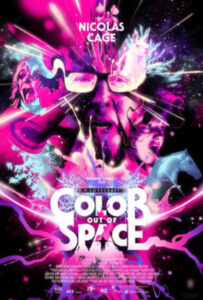‘Stalag 17’ is a unique look into World War II

I’ll start out with this Throwback review with an apology to Mike Hoy, who lent me his DVD copy of “Stalag 17” quite a while back. I did say I’d get to it (once I’d managed to get it to a DVD player!).
“Stalag 17” is a 1953 war film that takes us through a journey inside a POW camp run by Adolf Hitler’s army.
The film, which was based on a play of the same name written by Donald Bevan and Edmund Trzcinski, was inspired by their own experiences as prisoners in Stalag 17B in Austria. The movie was adapted by Edwin Blum and Billy Wilder. Wilder would serve as the director and producer for this film.
The movie follows POWs in barracks four of Stalag 17 and is narrated by one of the soldiers years after the war came to a close.
In December 1944, the men in this barracks — led by barracks chief “Hoffy” Hoffman (Richard Erdman) and security officer Frank Price (Peter Graves) — have arranged for two of their fellow airmen to escape through a tunnel.
However, the pair are shot in the attempt and the men of barracks four begin to believe there’s a traitor among them.
Their suspicion lies fully on J.J. Sefton (William Holden), a smooth talking, often cynical soldier who trades with their German captors for luxuries. He also is known to arrange profitable ventures for himself that distract the other prisoners from the mundane such as holding rat races, creating an improvised distillery and getting his hands on a makeshift telescope to spy on the Russian women who are prisoners in a neighboring compound.
Sefton is too obvious to be the mole, however, and he spends the majority of this movie attempting to figure out who exactly is letting him take the fall for their traitorous nature.
For me, when I think of a war-time film in any era of history, I think of a dark, gritty and often bloody storyline that often tugs deeply at your heartstrings and doesn’t hold back on showcasing the absolute horrors of war.
That wasn’t the case for this movie. Though there were certainly intense reminders of where our main cast of soldiers were, there was also a bit of comedy sprinkled throughout to alleviate those heavy moments.
I feel like “Stalag 17” did a good job of balancing the serious nature of its subject matter with the very human response to being trapped in a situation where the Geneva Convention is the only thing that stands between you and a much worse fate.
When you toss in a very “who-dun-it” piece into this story it really adds a unique layer that was intriguing to watch.
In doing some digging on this film, I discovered an intriguing fact I wanted to share — it was shot in chronological order.
That wasn’t a very common practice, and still isn’t really. However, it was done in an effort to help the actors dig into their character.
In a featurette, cast members noted many of them didn’t actually know the identity of the true informant until the last three days of filming. That’s a really interesting way to help your actors stay in character and portray their suspicions in a genuine manner.
Overall, if you’re interested in a unique telling of the experience of World War II POWs, based on actual experiences, consider giving “Stalag 17” a try. Be prepared, it has a roughly 2 hour runtime, but it’s worth it.
The build up throughout the film was played out well and you’ll find yourself paying attention to every member of barracks four to try and correctly guess just who the traitor is in their midst. I’ll admit, I was wrong in the end. But perhaps you’ll get it right!
“Stalag 17” is available to stream on Tubi, Pluto TV, and the Roku Channel for free or may be rented from Apple TV, Amazon Prime and Google Play. (Or, if you ask nicely, maybe Mike Hoy will let you borrow his DVD… that’s after I return it anyway.)
— — — —
Laura Jameson is managing editor of The Express.




